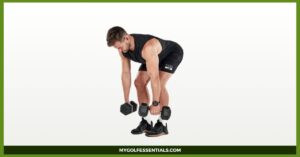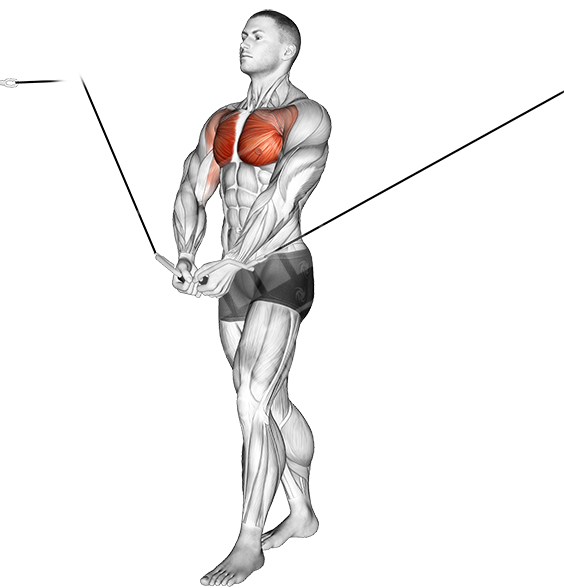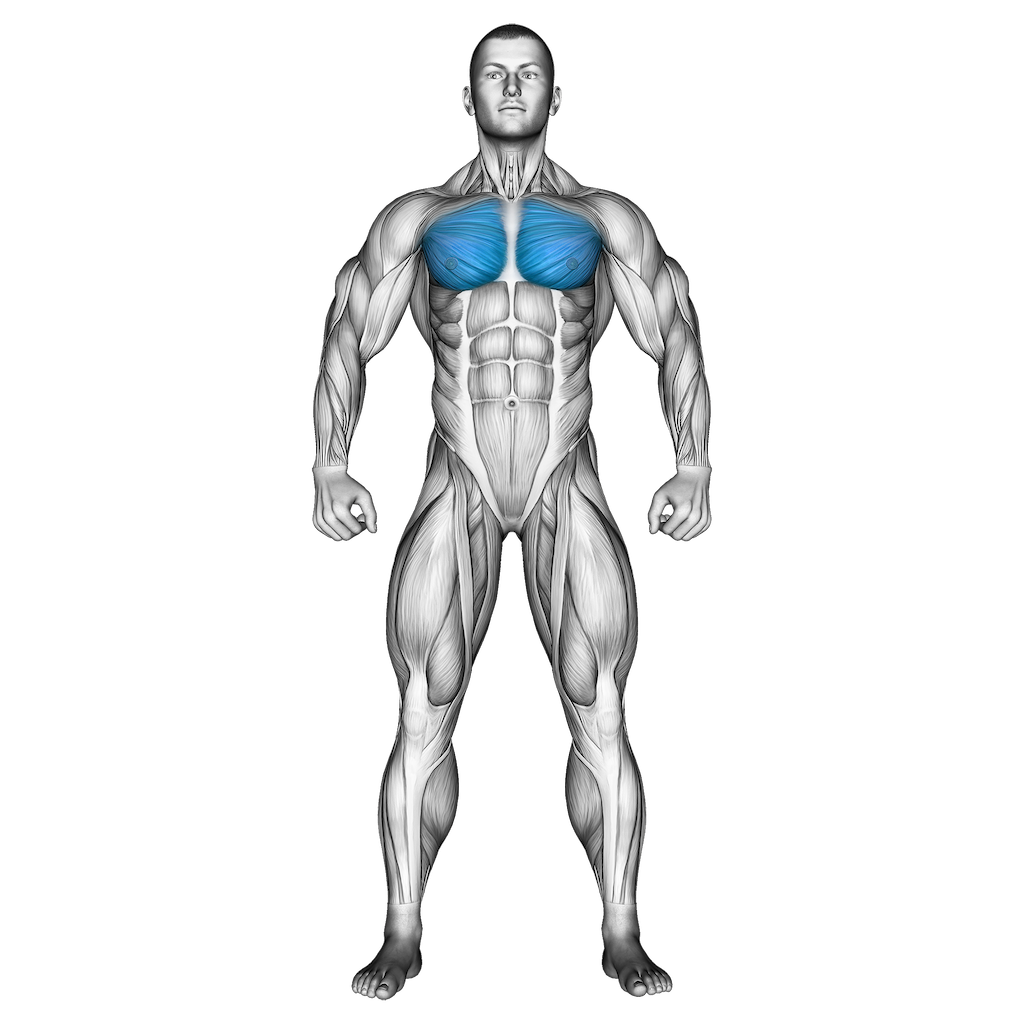Best Dumbbell Back Exercises

Are you looking to strengthen your back and improve overall strength? If so, consider incorporating dumbbell back exercises into your routine. Dumbbells are great tools for strengthening major muscle groups such as the lats, traps, rhomboids, and erectors- all essential building blocks of a strong and healthy backbone.
Not only do these dumbbell exercises help build size and strength for better posture, but they can also be very beneficial in alleviating lower back pain over time. Read on to learn more about key dumbbell exercises that target that ever-important back region!
Introducing Dumbbell Back Exercises
Dumbbell back exercises offer a multitude of benefits. They help to enhance muscle definition, promote better posture, and improve functional strength for everyday activities. These exercises are versatile, allowing for a range of motions that engage different muscle groups, leading to a balanced workout routine.
Moreover, they can be easily adjusted to cater to your fitness level and goal – whether you’re a beginner just starting your fitness journey or a seasoned pro seeking to up your game.
As for techniques, it’s crucial to maintain proper form to maximize the benefits and prevent injuries. Be mindful of engaging your core and keeping your spine neutral throughout the movement. Slow, controlled motions are key, focusing on the muscle tension rather than the weights.
Common dumbbell back exercises include the Bent-Over Row, Renegade Row, and the Single-Arm Row – all of which engage your back muscles effectively if done correctly. Always remember quality over quantity is the mantra for effective strength training.
Understanding Muscles Involved in Dumbbell Back Exercises
When performing dumbbell back exercises, it’s important to understand the specific muscles that are being targeted. The major muscles involved include the Latissimus Dorsi (lats), Trapezius (traps), Rhomboids, and Erector Spinae.
The lats, located on either side of your back, contribute to pulling motions and shoulder extension. Traps, situated in the upper back and neck, help with shoulder elevation and retraction. Your rhomboids, located between your shoulder blades, are essential for retracting the scapula. Lastly, the erector spinae, a collection of three muscles along your spine, is responsible for extending and rotating the spine.
In addition to these major muscles, dumbbell back exercises also engage a range of supporting muscles. These include the deltoids in your shoulders, the biceps in your upper arms, and your core muscles, which provide stability during the movements.
By understanding the function of each muscle, you’ll be able to better perform the exercises and tailor your workout routine to achieve your fitness goals. Always remember to warm up before starting your workout and stretch afterward to prevent injuries and maximize your performance.
Types of Dumbbell Back Exercises
Lat Pull-Downs
Lat pull-downs are an exceptional dumbbell back exercise that effectively targets the latissimus dorsi muscles. To perform this exercise, sit on a bench with your feet planted firmly on the ground. Hold a dumbbell in each hand above your head, and slowly lower them down to your sides, keeping your arms straight. You’ll feel a stretch in your lats as you pull the weights down. Remember to control the movement and avoid letting the weights drop.
Bent Over Rows and One-Arm Rows
Bent-over rows and one-arm rows are fantastic exercises for working various muscles in your back. For bent-over rows, hold a dumbbell in each hand and bend forward at your waist. Keeping your back flat, pull the dumbbells up to your chest, then slowly lower them.
A one-arm row is performed similarly, but you’ll only use one dumbbell at a time. Place one knee and the same-side hand on a bench for support, then pull the dumbbell up with your other hand. These exercises are excellent for strengthening the lats, rhomboids, and erector spinae, enhancing your back’s overall muscular strength and appearance.
Tips on Proper Form for Maximum Results
When performing dumbbell back exercises, proper form is paramount to ensure maximum results and prevent injury. Always keep your back straight and engage your core throughout the movement.
In exercises such as bent-over rows or one-arm rows, avoid rounding your back or straining your neck. Remember to control the weight throughout each motion, focusing on the muscle contraction and extension rather than the weight itself.
In a bent-over row, for instance, think of bringing your shoulder blades together as you pull the weights towards your torso and release slowly on the downward phase. For one-arm rows, keep your supporting knee slightly bent and your torso parallel to the floor.
As you pull the dumbbell up, try to pull from your elbow, keeping the weight close to your body. After reaching the top of the lift, lower the weight slowly to its initial position.
Best Dumbbell Back Exercises
The Renegade Row is another top contender for best dumbbell back exercises, challenging not only your back but also your core and shoulder stability. To perform this exercise, start in a high plank position with a dumbbell in each hand, feet hip-width apart. Keep your back flat and your body stable as you row one dumbbell up to your chest, then return it to the ground.
Repeat with the other arm. This compound movement engages the lats, traps, and erectors, while the plank position recruits your core for stability, making it a comprehensive exercise for overall strength and conditioning.
Dumbbell Pendlay Row
The Dumbbell Pendlay Row is a powerful and effective back exercise that targets multiple muscles simultaneously. Named after renowned weightlifting coach Glenn Pendlay, this exercise focuses on the lats, rhomboids, and traps. It begins from a dead stop on each rep, which promotes a full range of motion and helps to improve both your pulling strength and explosive power.
To perform this exercise, stand with your feet hip-width apart and hold a pair of dumbbells in front of you. Bend at your hips and knees, lowering your torso until it’s almost parallel to the floor. Keep your back flat throughout the movement.
As you initiate the movement, pull the dumbbells to your torso, keeping your elbows tucked close to your body. Lower the dumbbells back to the ground in a controlled manner, fully extending your arms. This constitutes one rep. This exercise is particularly beneficial for strength athletes and those looking to improve their posture and upper body strength.
As always, begin with a challenging weight that allows you to maintain proper form and gradually increase the load as you get stronger. With its focus on strength and precision, the Dumbbell Pendlay Row is a valuable addition to any back training program.
Dumbbell High Pull
The Dumbbell High Pull is another excellent exercise for the overall development of your back muscles. This compound movement targets not only your back but also your shoulders, arms, and lower body. To start, stand with your feet hip-width apart and hold a dumbbell in each hand in front of you.
Bend slightly at the knees, then explosively pull the weights up to your shoulder level, keeping your elbows high and out to the sides. Lower the weights back down in a controlled manner. This movement focuses on the upper and middle back, particularly engaging the traps and rhomboids.
It’s essential to note that the Dumbbell High Pull is an explosive movement, requiring a certain level of coordination and strength.
Therefore, beginners should start with lighter weights and gradually increase as they gain confidence and strength. Proper form, as always, is crucial to avoid injury and maximize the effectiveness of the exercise.
Concentrate on keeping your back straight and pulling the weights up in one smooth, controlled motion. This exercise is an excellent addition to your dumbbell back exercise routine, helping to boost both strength and explosive power.
Dumbbell Romanian Deadlift
The Dumbbell Romanian Deadlift is a fantastic exercise that targets your lower back while also working the hamstrings and glutes. To execute this movement, stand upright, holding a pair of dumbbells in front of you with your knees slightly bent. Keeping your back straight and chest up, hinge at the hip and lower the dumbbells along the front of your legs, as far as your flexibility allows.
You should feel a strong stretch in your hamstrings. Then, engage your glutes and hamstrings to return to the starting position, maintaining the natural arch in your lower back throughout the movement.
Remember, the focus of the Romanian Deadlift is the hip hinge. The motion should come from your hips moving back and forth rather than your lower back rounding and extending.
This exercise can significantly improve your hip mobility and posterior chain strength, which are crucial for various athletic movements. Additionally, the Romanian Deadlift can help improve your conventional deadlift technique and is a great way to target the muscles of your lower back safely and effectively.
Dumbbell Good Morning
The Dumbbell Good Morning is an often overlooked but highly effective exercise for strengthening the lower back, glutes, and hamstrings. It gets its unique name from the bowing motion, which resembles a polite greeting or ‘good morning.’ To perform this exercise, hold a pair of dumbbells at your shoulders with your feet hip-width apart.
Maintaining a straight back and a slight bend in the knees, hinge at the hips and lower your torso forward until it’s nearly parallel with the floor. Gradually return to the starting position, engaging your glutes and hamstrings during the upward phase.
It’s crucial to maintain a neutral spine throughout the exercise to avoid unnecessary strain and to maximize muscle engagement.
The Dumbbell Good Morning is excellent for improving hip mobility and posterior chain strength. It’s particularly beneficial for those sitting for extended periods, as it helps counteract the tightness and muscle imbalances caused by prolonged sitting.
As with all exercises, start with lighter weights to ensure correct form and gradually increase the load as your strength improves. This exercise is a fantastic addition to any dumbbell back routine, contributing to improved posture, enhanced athletic performance, and overall back health.
Dumbbell Bent-over Row
The Dumbbell Bent-over Row is a staple in many strength training routines due to its effectiveness in targeting a variety of muscles in the back. The primary muscles worked by this exercise include the latissimus dorsi, rhomboids, and middle trapezius.
To start, stand with a dumbbell in each hand and feet shoulder-width apart. Bend at the waist with slightly bent knees, maintaining a flat back. Pull the dumbbells up towards your chest, keeping the elbows close to the body and squeezing your shoulder blades together at the top of the movement.
Lower the weights in a controlled manner to complete a single repetition. The Dumbbell Bent-over Row is not only essential for building a strong and muscular back but also plays a significant role in improving posture and stabilizing the shoulders.
As with other exercises, it’s important to start with a weight that allows you to perform the exercise with proper form and gradually increase the weight as your strength improves. Thus, the Dumbbell Bent-over Row is an incredibly versatile and beneficial addition to any dumbbell back exercise regimen.
Dumbbell Yates Row
The Dumbbell Yates Row is a great exercise that targets the upper back muscles, including the trapezius, rhomboids, and latissimus dorsi. Start by standing upright with a dumbbell in each hand and your feet shoulder-width apart.
Bend forward slightly from the waist, keeping a slight bend in your knees and your back straight. Pull the dumbbells towards your abdomen, keeping your elbows close to your body and squeezing your shoulder blades together at the top of the movement.
Lower the dumbbells slowly and in a controlled manner to complete one repetition. Like the Bent-over Row, the Yates Row is perfect for building a strong and muscular back, but its unique angle hits the upper back muscles more effectively.
The key to performing this exercise correctly is to keep your back straight and pull the weights up using your back muscles, not your arms. This exercise is an excellent addition to any dumbbell back exercise routine, helping to enhance both strength and muscle definition.
Dumbbell Single-Arm Row
The Dumbbell Single-Arm Row is a unilateral exercise that allows for targeted development of the back, addressing any imbalances in muscle strength and size. To perform this exercise, begin by standing beside a bench, placing one knee and the same-side hand on the bench for support.
Hold a dumbbell in your free hand, keeping your back parallel to the floor. With a controlled movement, draw the dumbbell up towards your chest, keeping the elbow close to the body, and then lower it back down.
The Single-Arm Row effectively targets the latissimus dorsi, rhomboids, and trapezius muscles. By working one side of your body at a time, this exercise can help refine muscle coordination and improve overall body balance.
Moreover, it’s an excellent choice for individuals seeking to enhance their functional strength, as it mimics the pulling movements performed in everyday life. As with all exercises, it’s essential to maintain proper form and start with a comfortable weight to ensure safety and effectiveness.
Increase the weight progressively as your strength improves, making the Dumbbell Single-Arm Row an indispensable part of your dumbbell back exercise routine.
Kroc Row
The Kroc Row is a unique variant of the traditional dumbbell row that allows you to lift heavier loads and really challenge your back muscles. Named after its innovator, powerlifter Matt Kroczaleski, this exercise targets the latissimus dorsi, rhomboids, and trapezius muscles. To start, place one hand and knee on a flat bench, hold a dumbbell in the other hand, and let it hang straight down.
Engage your back muscles to pull the dumbbell to your side, then lower it back down. While this exercise allows you to use a bit of momentum, it’s crucial to maintain control throughout the lift and ensure your back muscles are doing the work. The Kroc Row is a supreme exercise for building muscular back and grip strength.
Dumbbell Reverse Fly
The Dumbbell Reverse Fly is a fantastic exercise for targeting the posterior deltoids and upper back muscles, including the rhomboids and trapezius. Begin this exercise by standing with a dumbbell in each hand, feet hip-width apart, and knees slightly bent. Bend forward at the waist, ensuring your back is straight and parallel to the floor.
Extend your arms straight down, then raise them out to the sides, maintaining a slight bend in the elbows. Lower the dumbbells in a controlled motion to complete a repetition. This exercise not only improves back strength and shoulder stability but also contributes to better posture by counteracting the forward shoulder roll associated with extended periods of sitting.
As with all exercises, it’s crucial to perform the Dumbbell Reverse Fly with proper form and a weight that’s appropriate for your strength level.
Dumbbell Chest-Supported Row
The Dumbbell Chest-Supported Row is an effective exercise that targets the major muscles in the back, including the latissimus dorsi, rhomboids, and trapezius. Begin by laying face down on an inclined bench, holding a dumbbell in each hand with your arms hanging straight down.
Engage your back muscles to lift the dumbbells towards your chest, keeping your elbows close to your body. Lower the weights slowly to complete one repetition. This exercise isolates the back muscles by removing the ability to use momentum, promoting a strict form that maximizes muscle engagement. As with other exercises, it’s important to choose a weight that suits your strength level and ensures safe, controlled movements.
Dumbbell Pullover
The Dumbbell Pullover is a dynamic and effective exercise that targets the latissimus dorsi while also engaging the triceps, pecs, and serratus anterior. To begin, lie down on a flat bench with a dumbbell in both hands, your arms extended over your chest. Keeping a slight bend in the elbows, slowly lower the dumbbell back over your head until your arms are parallel to the floor.
Pull the dumbbell back over your chest to complete one repetition. This exercise requires careful control and smooth movements, so ensure to choose a weight that allows for proper form. It’s a fantastic addition to any dumbbell back exercise routine, promoting upper body strength and flexibility.
Chest-Supported Shrugs
The Chest-Supported Dumbbell Shrug is an excellent exercise that puts emphasis on the trapezius muscles in the upper back and reduces the strain on the lower back. Begin this exercise by lying face down on an inclined bench, holding a dumbbell in each hand.
With your arms hanging straight down, lift your shoulders as high as possible in a “shrugging” motion and then lower them back down. This exercise promotes shoulder mobility and upper back strength, which are essential for maintaining good posture and performing various daily activities. As always, it’s crucial to use a weight that you can handle safely and effectively.
Dumbbell Seal Row
The Dumbbell Seal Row is an excellent exercise that heavily targets the latissimus dorsi while also engaging the rhomboids and trapezius. Begin by lying face down on a bench that is raised off the ground, holding a dumbbell in each hand. With your feet secure on the ground, pull the dumbbells towards your chest, ensuring your elbows are close to your sides.
Lower the dumbbells in a controlled manner to complete one repetition. The Seal Row is highly effective for isolating the back muscles and promoting muscular development, making it an essential addition to any core dumbbell back exercise routine. Always remember to select a weight that is appropriate for your strength level and allows for proper form.
Dumbbell Plank Row
The Dumbbell Plank Row, also known as incline bench Renegade Row, weight bench is a comprehensive exercise that combines a traditional plank with a rowing motion. This compound move not only strengthens the major muscles in the back, including the latissimus dorsi, rhomboids, and trapezius, but it also engages the core, deltoids, and even the glutes. Begin in a plank position, hands gripping dumbbells and feet spread wide for stability.
Keeping your body stable, row one dumbbell renegade row upwards while balancing on the other. Return the dumbbell to the ground and repeat on the other side. This exercise requires a high level of balance and control, so start with a lighter weight and progress as your strength and stability improve. The Dumbbell Plank Row is a powerhouse of exercise, contributing significantly to any dumbbell back exercise routine.
FAQs
What are the key benefits of dumbbell back exercises?
Dumbbell back exercises improve strength, muscle tone, and posture while also promoting balance and flexibility. They target major back muscles, including the latissimus dorsi, rhomboids, and trapezius, supporting spinal health and reducing the risk of back pain.
How often should I perform these dumbbell back exercises?
For optimal results, aim to include these dumbbell back exercises in your workout routine 2-3 times per week. It’s essential to allow your muscles to recover between sessions, so ensure to space out your workouts appropriately.
Can I do dumbbell back exercises at home?
Absolutely, all the exercises listed can be performed at home. All your left leg needs is a pair of dumbbells and, for some exercises, an inclined or flat bench. If you don’t have a bench, you can modify some exercises to perform them on the floor.
Do I need to do all these exercises in one workout?
Not necessarily. You can select a few bent-over dumbbell row exercises to include in your workout or rotate through them over multiple sessions. The key is to ensure you’re targeting all major muscle groups in your back for balanced strength and development.
What weight of dumbbells should I use for these exercises?
The weight of the dumbbells you should use will depend on your current strength level. Choose a single-arm dumbbell row weight that challenges you but allows for proper form and control throughout the exercise. As your strength increases, you can gradually increase the weight.
Conclusion
I hope this article has given you an insight into the range of dumbbell back exercises that can be included in your routine. Always ensure to select a weight that is appropriate for your strength level, prioritize proper form and control, and allow for sufficient muscle recovery between sessions. With dedication and discipline, these exercises will help you achieve strong, well-defined muscles in your upper back.



